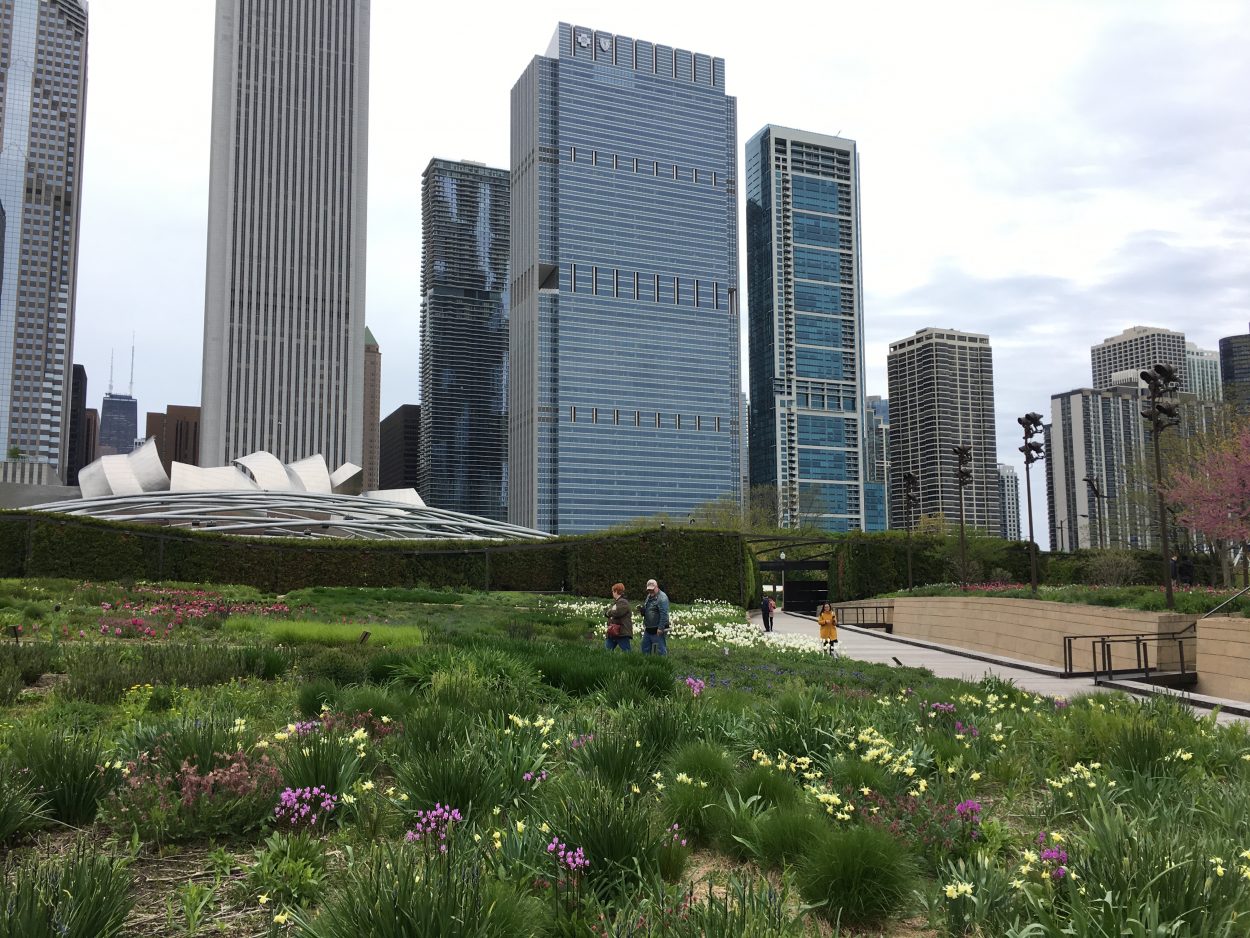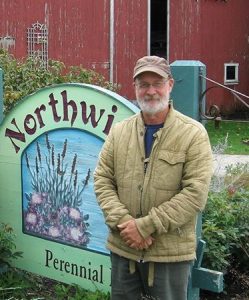Winter Symposium: Gardening With Purpose & Passion
During this year’s Winter Symposium and CVNLA short course, we dug deeper into what it means to garden with purpose and passion through perennial gardens. Perennials offer a different gardening experience than annuals because they come back year after year and require less maintenance. The New Perennial Movement focuses on establishing a link with nature through the grouping of naturalistic plant communities. Two leaders in this movement, Roy Diblik, co-owner of Northwind Perennial Farm, and Laura Ekasetya, Executive Director at Lurie Garden, shared their expertise on perennial gardens at our recent symposium.

Lurie Gardens in Chicago highlights the New Perennial Movement style of gardening, featuring a more natural look, native grasses, and plants that come back year after year like daffodils.
The Lurie Garden, a perennial garden located over the Lakefront Millennium Parking Garage in Chicago, is one of the world’s largest green roofs. Piet Oudolf, the designer of the garden, is at the forefront of the New Perennial Movement and is well known for his design for the High Line in New York. Lurie Garden was Oudolf’s first American commission, so he brought on local horticulturist, Diblik, for his expertise in the native perennials.
Ekasetya, who currently runs the garden, discussed the difficulties of managing a perennial garden in an urban environment. Since Lurie Garden is a public space, the gardeners have to work around the public. Ekasetya collected laughs from the room when she used the pun GUARDening to describe accommodating the public and crowded events and the balance required to encourage public use of the space while protecting plants from being trampled. You could feel a palpable, shared understanding from the audience of all the quirks and challenges that come along with gardening in an often visited space.
Ekasetya went on to talk about how filling the gaps in the garden with taller plants became crucial in preventing the public from disturbing the beds because any open spots were too attractive for photographers to resist as they looked for the perfect photographic angle.
At Lurie, there is a balance between including native and non-native plants. Since the Lurie Garden location was originally a marshland, prairie plants are a large influence on the aesthetics of the garden. Perennials and grasses evoke a naturalistic look but making sure each plant is the right fit for the right spot is key.
Diblik compared perennial gardening to building a quilt. The trick behind perennial gardens is having deep background knowledge of each plant’s growth pattern and determining what percentages of space you need to account for each.
“You want to be able to look at a plant and say, I know you,” Diblik said. At its core, perennial gardening is all about a strong design. Diblik finds inspiration for his perennial designs through the work of Impressionist painters. Diblik explained that you could take every piece of the garden apart and put it all back together in a different way to create a brand new garden. Despite the details that go into the planning process, perennial gardens are free-flowing and ever-changing. Adapting to the mindset of the New Perennial Movement is half the challenge. Diblik emphasized that perennial gardening is available to everyone.
“If you want to be needed by your plants, go to your vegetable garden,” said Diblik. “Perennials say, ‘Go to your family and relax.'” He compared gardening to parenting, saying that plants with good parents become good adults. He also touched on several points about maintenance: “Plants love living in their own debris.”
I left the symposium feeling inspired and dreaming of the day I can build my own sunny backyard perennial garden. For now, I’m confined to my one sunny window sill overrun with potted plants, but a girl can dream.

